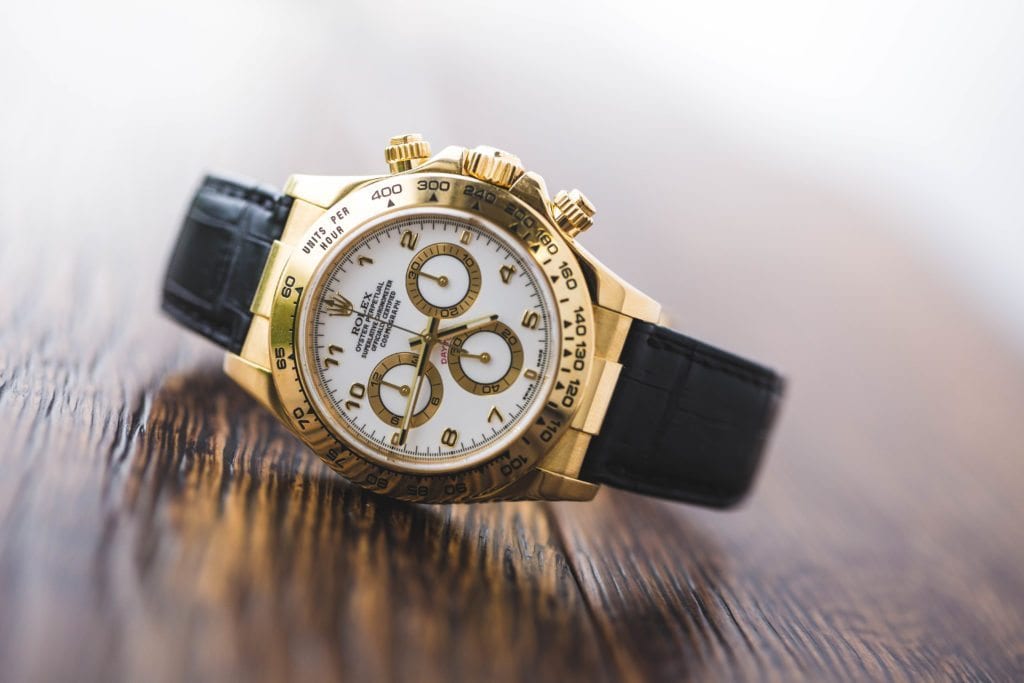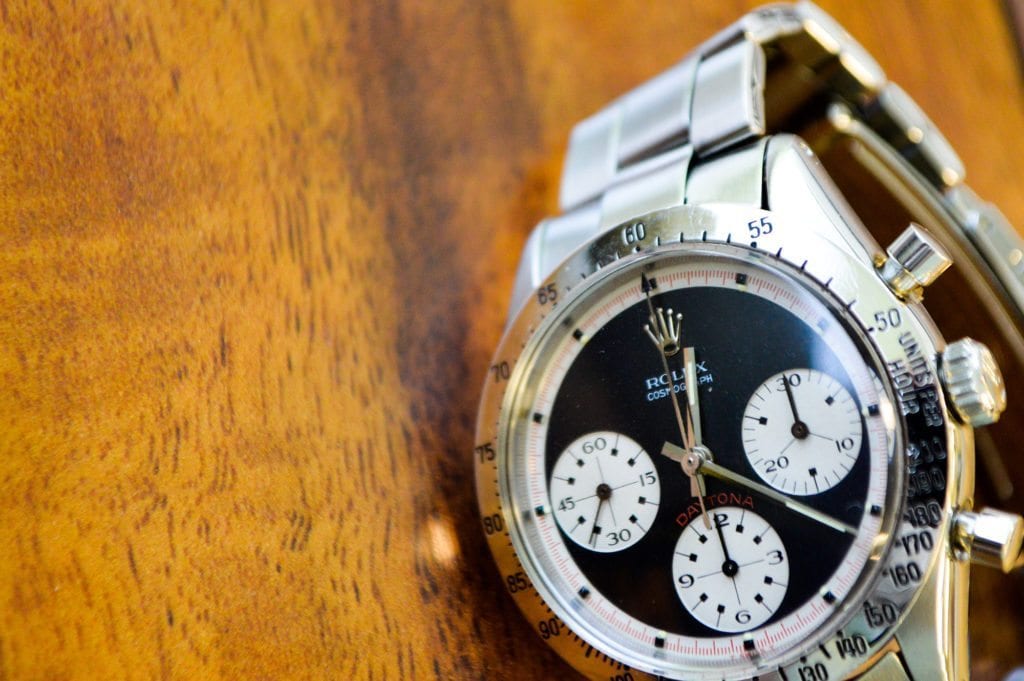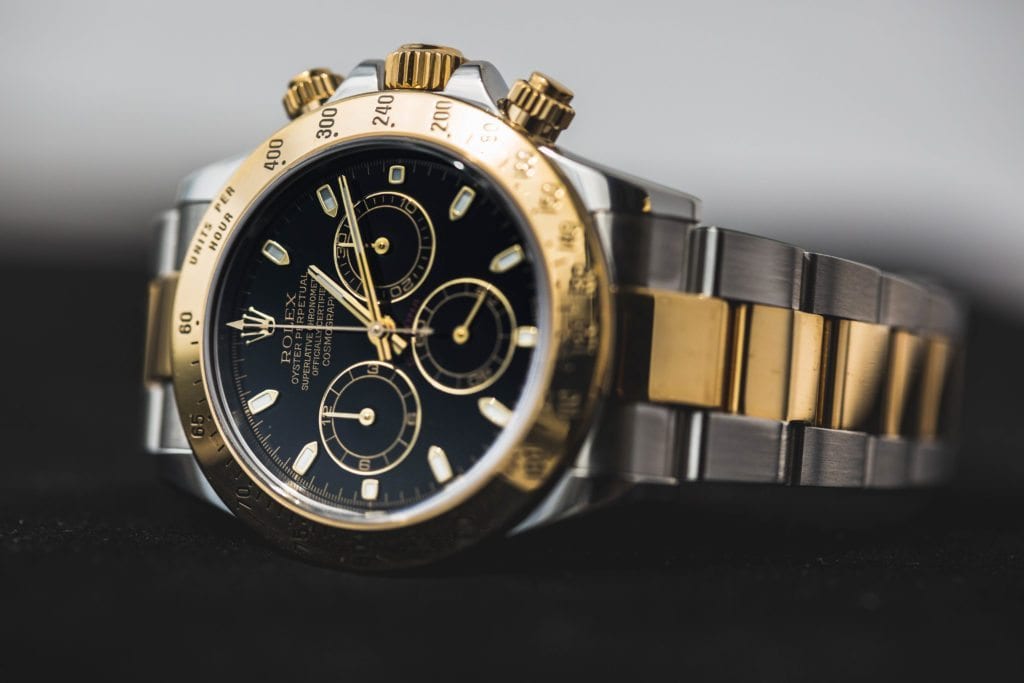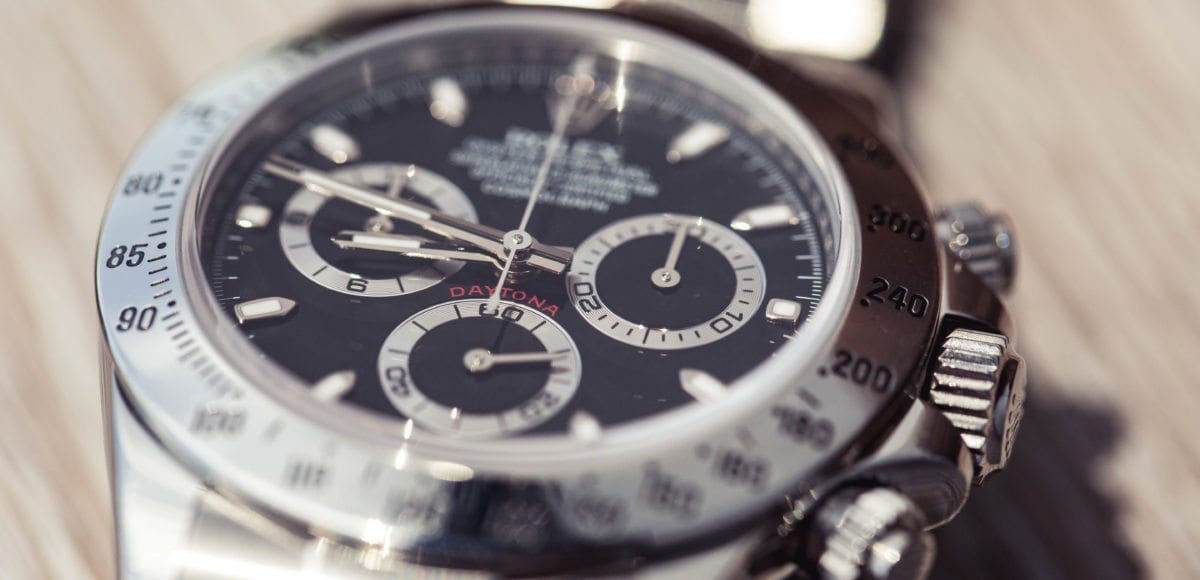The Rolex Daytona
If there is a watch that defines Rolex as a brand, it would be the Rolex Daytona. Or, to call it by its full and proper name, the Rolex Oyster Perpetual Cosmograph Daytona. In the 1930’s, when Rolex was making itself known for producing versatile and durable sports watches. This is due, in part, to its “Oyster” case. At the same time, the beaches of Daytona, Florida were serving well for Sir Malcolm Campbell. Here he continuously set and broke the land speed world record. From there, Daytona began establishing itself as the epicenter for the emerging sport of stock car racing. Rolex began developing a chronograph that could be used specifically for auto racing. In 1963, Rolex introduced its newest chronograph, later known as the Rolex Daytona. It’s a racing watch which became synonymous with car racing, NASCAR, and the Daytona Beach track in particular.

As a chronograph, the Rolex Daytona has multiple functions built in taking it beyond a watch that simply tells time. Essentially, it also functions as a stopwatch. Out of the three indicators on the dial, two of them can record elapsed hours and minutes respectively. The third indicator is separate from the stopwatch function and constantly measures the seconds. The tachymeter scale along the Rolex Daytona’s outer bezel helps to measure elapsed time and average speed over a given distance.
Reference 6239
First introduced in 1963, the reference 6239 chronograph that became the Rolex Daytona was a departure from Rolex’s earlier chronographs in a number of ways. Most obviously in the watch’s aesthetics. First, the production of the main dial and indicators were in inverse colors rather than the previous one-color dials. These one-color dials were generally either a black dial with white indicators or vice versa. Second, Rolex removed the printed tachymeter scale from the dial and engraved it on the bezel instead. The Rolex Daytona changes improved the legibility of the watch’s indicators. However, it also gave the watch a much sportier look.

Reference 6240
In 1965, the Rolex Daytona reference 6240 acquired screw-down chronograph pushers instead of the pump pushers found on the original model, which made the chronograph even more water resistant while in use. These pushers, along with the Rolex Daytona’s original manual-winding movement, contributed to the watch’s timeless design. They remained mostly unchanged for much of its manufacturing history.
The Rolex Daytona: 1988 to Present
As far as the mechanical aspects of the watch throughout its history, the self-winding Rolex Daytona movement introduced in 1988 was based on the Zenith El Primero Caliber 400. It used this until 2000, when Rolex introduced its 4130 caliber. This 4130 movement finally brought all of Rolex’s manufacturing in-house and is distinctive in being Rolex’s first self-manufactured mechanical chronograph.

Given the Rolex Daytona’s immense popularity today among consumers and collectors, it’s almost surprising to know that for a good portion of its history, the Rolex Daytona was something of a hard sell. But because of the watch’s attractive design, its reliability, and a little help from Paul Newman, the Rolex Daytona has become the prime example of Rolex’s manufacturing quality and their continued dominance of the luxury watch industry.
Learn more about other Rolex models, like the Submariner.
Get More Articles Like This in Your Inbox
We're constantly creating great content like this. So, why not get it delivered directly to your inbox? By subscribing you agree to our Privacy Policy but you can unsubscribe at any time.






